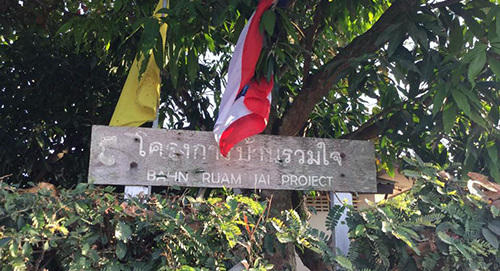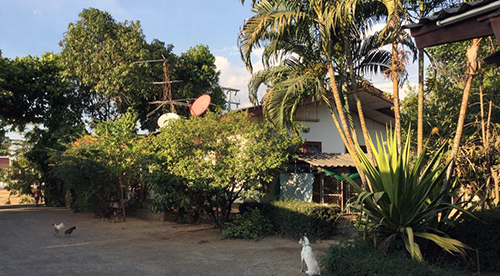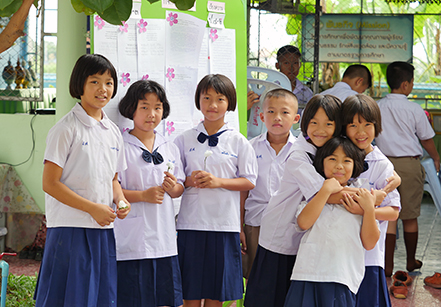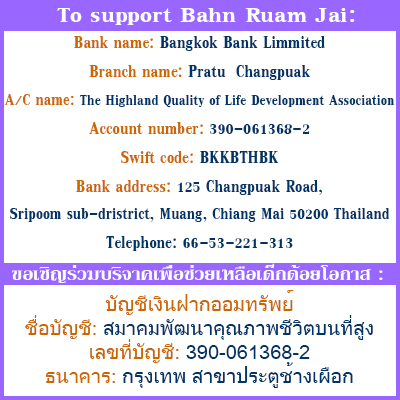Background of BRJ
Background of BRJ

Bahn Ruam Jai Project (BRJ) was established in January 1984 in response to the problem of addressing educational needs among Thai tribal indigenous children and teenagers who were experiencing particular neglect and hardship in their villages. The project started with five founders, two of them tribal indigenous people belonging to the Hmong and the Mien people. The others were lowland Thai, one who was an anthropologist, the other a tradesman and one who worked as a government teacher in a tribal indigenous community. All five founders were closely familiar with the tribal indigenous people’s way of life. The general lack of quality education in tribal indigenous communities led to the commencement of the BRJ project.
With very limited financial resources, the project borrowed money from respected people and friends of the founders. One of the first fund-raising activities was an exhibition and presentation of tribal indigenous culture held in Bangkok in 1984. The amount of money raised was 897,896 Baht (US$35,915 [US 1=25 Baht] in 1984) from which the project showed a profit of 140,763 Baht (US$5,630). Together, these financial resources made it possible for the project to support 30 children in the first year. The money was used to rent one building which was used as both the administrative office and accommodation for the tribal indigenous students.
After three subsequent changes of location, BRJ relocated in 1988 to a plot of land where it settled permanently. The land was approximately three acres, costing 420,000 Baht. A Foundation bought the land and a representative of this Foundation officially gave permission for BRJ to use the land for the duration of the project.
In 1990, the Canada Fund of Thailand made financial contributions towards the construction of a girls’ dormitory, boys’ dormitory, staff quarters, meeting hall and kitchen.

BRJ is an autonomous organization, but has existed under the auspices of the Highland Quality of Life Development Association since 1989. This Association has the status of a legal organization [registration number Jaw 164].
Since its first year, the Project has provided accommodation, guidance and basic scholarships for under-served tribal indigenous children and teenagers. In addition, it provides facilities and accommodation for those who have finished compulsory schooling (at that time seven years of schooling) but lacked the opportunity to further pursue their education due to the circumstances in their home villages. The Project aims to accommodate these students, while providing both formal and non-formal educational opportunities for them until they are able to support themselves.

Moreover, the BRJ seeks to raise the students’ ethical consciousness and help them to recognize the growing necessity of community development. Some of the Project’s aims have already been and continue to be realized, as many students have been successful in transferring the knowledge they have learned at the BRJ to what is relevant to tribal indigenous life, such as the benefits of organic farming and health care in their communities. Many former students have also chosen to return to their communities and are now helping to teach other villagers how to read and write Thai at a basic level.
In 2010 donations and aid were extended to BRJ for the purchase of the land where Bahn Ruam jai is currently situated. Donors included; close friends of BRJ, NGOs networking for Indigenous Tribal Development, several BRJ committee members, all staff members of BRJ, alumni of BRJ, and BRJ student Cooperative shop.
We paid the landlord who acted as a representative of the Foundation that signed the official agreement allowing BRJ to use the land.
After paying we received the title/deed for the land there by become the property of the Highland Quality of Life Development Association.
The objective of using the land solely for the Bahn Ruam Jai project was then registered with the government.

17 March 2022
Viewed 3335 times



